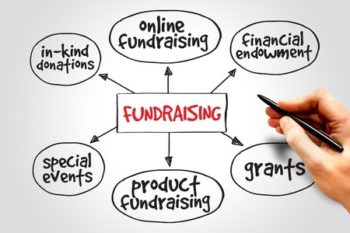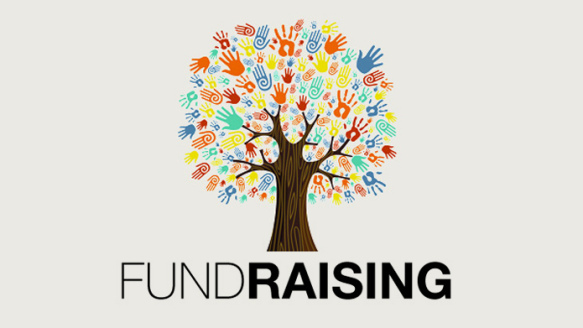Imaginative Nonprofit Fundraising Ideas: Boost Donations and Involvement
Imaginative Nonprofit Fundraising Ideas: Boost Donations and Involvement
Blog Article
The Duty of Neighborhood Interaction in Nonprofit Fundraising: Building Lasting Relationships for Lasting Support
Area interaction is progressively recognized as a vital component of effective nonprofit fundraising. By cultivating authentic relationships with regional stakeholders, organizations can cultivate trust fund and loyalty, which are vital for sustainable assistance. However, the strategies and techniques employed to engage areas vary extensively, raising vital concerns about performance and influence. What are the finest techniques for growing these necessary links, and how can nonprofits determine their success in this arena? Recognizing these dynamics might significantly influence the future of fundraising initiatives and the total mission of nonprofit organizations.
Comprehending Neighborhood Interaction
Area interaction is an important part of effective nonprofit fundraising initiatives. Nonprofits need to identify vital stakeholders-- such as neighborhood members, neighborhood companies, and various other companies-- to create reliable engagement approaches.
Efficient community involvement is asserted on energetic listening and responsiveness to the demands and passions of the neighborhood. This process involves obtaining responses, recognizing area characteristics, and making certain that the company's goal lines up with neighborhood priorities. Involving the community can take different kinds, including public conferences, volunteer opportunities, and collaboration efforts, each designed to urge involvement and financial investment in the company's goals.
Furthermore, area involvement must be approached as an ongoing dialogue instead of a single effort. By cultivating a comprehensive setting where neighborhood voices are listened to and valued, nonprofits can build a strong foundation for future fundraising ventures. Eventually, a deep understanding of area engagement equips companies to create authentic connections that improve their total effectiveness and sustainability.
Benefits of Solid Relationships
Solid relationships formed with neighborhood involvement return numerous benefits for not-for-profit fundraising initiatives. First and foremost, these partnerships foster trust and credibility, important elements in motivating donors to contribute. When potential advocates see a nonprofit actively included in their neighborhood, they are more probable to think in its objective and effect.

Furthermore, these relationships assist in effective interaction. Nonprofits can leverage their links to share stories of influence, updates, and requires, guaranteeing that fans stay enlightened and involved. This open line of communication not just strengthens bonds but additionally urges referral promotion, expanding the not-for-profit's reach.
Finally, strong area ties can draw in new partners and sponsors. Organizations and individuals are extra inclined to straighten with companies that demonstrate purposeful community participation, providing extra sources and support that can significantly improve fundraising capacities. Therefore, growing robust partnerships through neighborhood interaction is integral to a not-for-profit's long-term fundraising success.
Strategies for Efficient Involvement
Just how can nonprofits properly involve their neighborhoods to improve fundraising efforts? Developing targeted strategies is important for fostering meaningful links. Initially, leveraging social media sites systems makes it possible for organizations to share their mission dynamically and interactively, reaching a broader target market. Normal updates, involving material, and calls-to-action can galvanize neighborhood interest and participation.
2nd, organizing area occasions, such as workshops, volunteer possibilities, or fundraising drives, facilitates face-to-face communication, allowing nonprofits to showcase their influence and efforts. These events not only elevate funds however additionally cultivate relationships and enable neighborhood participants to involve straight with the reason.
Third, executing individualized interaction approaches can improve interaction. Tailoring messages to specific benefactor sectors based upon passions and previous contributions promotes a sense of belonging and investment in the organization's mission.
Lastly, developing collaborations with local businesses and neighborhood leaders can magnify outreach initiatives. Collaborative Recommended Site initiatives can improve visibility and trustworthiness, showing a cumulative dedication to the neighborhood's health. By integrating these approaches, nonprofits can build enduring relationships that improve fundraising initiatives and drive lasting support.
Determining Involvement Success
While engaging the neighborhood is crucial for successful not-for-profit fundraising, gauging the efficiency of these interaction initiatives is equally essential. Developing clear metrics permits organizations to examine just how well they are getting in touch with their audience and attaining their fundraising objectives. Key performance indications (KPIs) such as contributor retention rates, volunteer engagement levels, and interaction on social media sites systems provide tangible data for examination.

Frequently examining these metrics enables organizations to pivot their methods when necessary, making sure that community interaction stays lined up with their overall objective. Additionally, sharing these outcomes with stakeholders promotes openness and builds depend on, urging additional area involvement. Inevitably, a robust dimension framework not only educates future fundraising initiatives yet also enhances the connection in between the nonprofit and its advocates, preparing for sustainable straight from the source success.
Study in Neighborhood Influence
Numerous study show the extensive influence that neighborhood involvement can have on not-for-profit fundraising success. One remarkable instance is the "Food for Idea" campaign, where a regional food financial institution partnered with organizations and institutions to host area suppers. These events not just elevated funds however also cultivated a sense of belonging amongst participants, dramatically boosting benefactor retention rates.
An additional compelling case is the "Eco-friendly Spaces Project," which included neighborhood homeowners in the revitalization of city parks. This initiative not only amassed economic assistance from local organizations but likewise cultivated a volunteer base that added to continuous maintenance and programming. The sense of possession and satisfaction amongst area members translated right into sustained contributions.
In the world of arts, the "Art for All" campaign effectively engaged local artists and patrons to create joint art installments, leading to boosted exposure and donations for a local arts not-for-profit.
These examples highlight that when nonprofits prioritize community involvement, they can create lasting partnerships that boost fundraising initiatives, making certain lasting support and cultivating a dynamic area society. Such cases show that area engagement is not merely a strategy but an essential pillar of not-for-profit success.
Final Thought
In conclusion, neighborhood engagement is essential to the success of nonprofit fundraising initiatives. By promoting solid partnerships with regional stakeholders, organizations boost depend on and integrity, causing boosted benefactor retention and commitment. Applying effective involvement methods and measuring their influence ensures that nonprofits can adjust and flourish. Inevitably, a durable foundation of neighborhood support not only intensifies fundraising potential find out here but additionally grows a culture of partnership, crucial for achieving long-lasting organizational objectives and sustaining meaningful influence.
Nonprofits should determine vital stakeholders-- such as community members, regional organizations, and other organizations-- to produce reliable involvement methods.

In conclusion, area interaction is indispensable to the success of nonprofit fundraising efforts.
Report this page